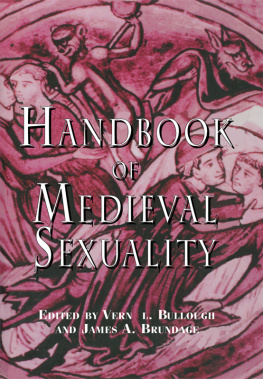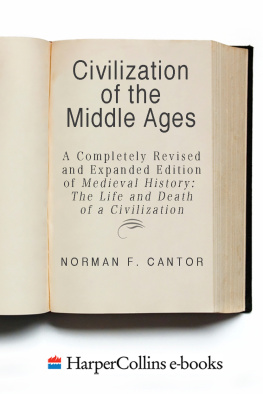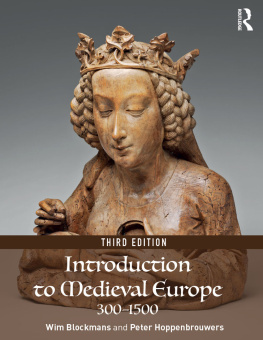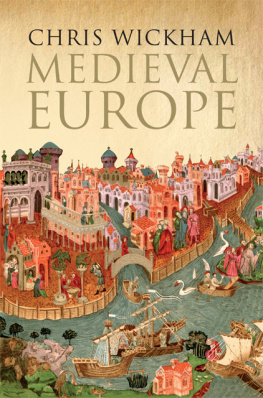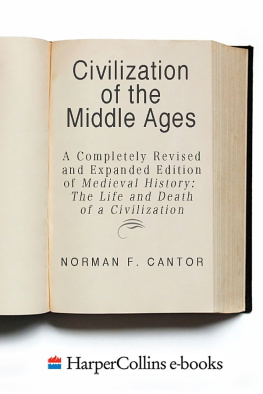About the Authors
John M. Riddle is an Alumni Distinguished Professor emeritus at North Carolina State University and author of eight books and numerous articles. His specializations are the Middle Ages and the history of early science. His special recognitions include a Fulbright Scholarship in Germany (196465), the International Urdang Medal (1987), membership in the Institute for Advanced Study, Princeton (1988), and the Holladay Medal, the highest faculty award at his university. A recent book is Eves Herbs: A History of Contraception and Abortion in the West (Harvard University Press, 1997).
Winston Black is assistant professor of history at Assumption College in Worcester, Massachusetts. He specializes on the history of religion and the history of medicine in the Middle Ages. He is the author of Henry of Huntingdon Anglicanus Ortus: A Verse Herbal of the Twelfth Century (Oxford, 2012) and various articles and chapters on medieval medicine, medieval Latin, and the intersections of medieval theology and science.
Acknowledgments
Fortune smiled on me when Dr. Winston Black, an accomplished medievalist, agreed to lend his considerable talent in preparing this second edition. Many friends and colleagues read sections, often sizable, in areas of their expertise and offered many suggestions, all of which I heeded. To be sure, errors are my responsibility alone. I gratefully acknowledge the assistance of James Banker, Christopher Broadhurst, Sharon Cooke, Alexander De Grand, Gerald Elkan, Silvine Farnell, Ian Frady, Hassan Hassan, Joseph Hobbs, Kaye Hughes, Akram Khater, Keith Luria, James Mulvey, S. Thomas Parker, Helen Perros, Paul Pesavento, Edith Sylla, Gregory Upchurch, and Jennifer Young. Also, a number of publishers readers made significant contributions but, alas, being anonymous, I can only impersonally thank them for their careful attention and quality critiques. My wife, Margaret, supported me through the despondent moments and encouraged me through it all. Susan McEachern, Sarah Wood, Meg Tilton, and Audra Figgins of Rowman & Littlefield provided support, while relating to me in a friendly, heartening way. Finally, I gratefully acknowledge and respect the assistance of Kathy Kaiser, who carefully, skillfully, and diplomatically guided the manuscript by developing the textual discourse with a coherence that I did not first impart.
CHAPTER 1
The Transformation of Classical Civilization
The Political and Economic Story through the Fifth Century CE
Each Roman senator and businessman who was summoned to Emperor Domitians home on the Palatine, the hill at the heart of ancient Rome, was afraid that night, in the year 89 of our common era ( CE ). Each had been told to come alone, without the usual bodyguard that any person of wealth needed in the crime-ridden streets of Rome after dark. Why did the emperor want him? Who else was invited? As each arrived, he saw the house was dark. Upon entering, one by one, each was ushered into a dark room that was decorated as if for a funeral. In the dining room were small tombstones, each inscribed with the name of a guest.
When Domitian entered, he said nothing. Silence and fear pervaded the room. All could now see who had been invitedthose who had dared to advocate for the republics restoration and an end to the monarchy. Next, handsome young boys, painted in black (the color for funerals) but otherwise naked, came into the room, circled, and sat, each before a guest. Beside each of the boys was a silver dagger.
The food served was the same as that traditionally served at funerals. Each guest must have wondered whether the funeral was his. When the evening was over, the emperor supplied an escort to accompany each guest home. They were sorely afraid as they walked through the darkness. As each guest reached his home, congratulating himself on a narrow escape, a knock on the door announced the delivery of a gift from Domitian. Impossible to refuse, the gift consisted of the boy painted black, the silver dagger, and the leftovers from dinner.
T he senators would have remembered that night well; certainly their dream of a return to the republic, which had been born some six centuries earlier, was never realized. Moreover, Domitian himself was assassinated only seven years later. On such unstable foundations did authority rest in the Roman Empire. Nevertheless, from the moors of Scotland and the forests of Ukraine to the brown sands of northern Africa and the blue of the Persian Gulf, the Roman Empire governed a vast region, the extent of which has never been equaled. Throughout that area, the mission of Rome was, as Romes great poet, Virgil, told the Romans at the beginning of the empire, to crush the proud and impose the way of peace (Aeneid 6.851853), and, to an amazing extent, that mission was carried out for centuries. Not only that, in terms of lasting influence, the Romans produced perhaps the most successful of states. To take just one example: The long line of monarchs who assumed the name of Caesar starts with Augustus (63 BCE 14 CE ) and extends even beyond the Middle Ages to the early twentieth century, when the last Caesarsthe Russian Tsar and German Kaiser (both titles derived from Caesar)were forced out.
Rome the Eternal CityRoma Aeternaruled well enough and long enough to earn that name, yet the Roman Empire fellor at least experienced a change so complete that by the year 350 CE it makes sense to speak of a new age beginning, and by 476 the reign of the last Roman emperor in the West had ended. We start out by examining the strengths that made Rome eternal and that help to explain Romes influence on the ages that followed. But even during the relatively successful first two centuries of the empire, at least some of the weaknesses that eventually led to the fall of Rome were becoming visible. Subsequent political and structural changes with the reforms of Diocletian and Constantine (ca. 280350 CE ) were so drastic that they can be seen as ending the age of classical civilization. One part of those reforms was the acceptance of Christianity, the political impact of which is examined in this chapter while the reasons for the deeper social changes are explored in chapter 2. The belief that the Middle Ages began (roughly!) in 300 is reflected in the date range given in the title of this book, but this chapter follows scholarly tradition in taking the story further. Drastic reforms at the end of the third century allowed the political power of the Roman Empire to survive, but the changes only delayed the inevitable defeat of the empire in the West. The chapter concludes with a discussion of the various theories of why that political power came to an end.
What Made Rome?
Estimates of the Roman Empires population hover around 80 million, with most people living in its eastern half, an area east of the Greek mainland, with the Western Empire considered the land west from Italy. Indeed, for all of Europe (including the non-Roman regions of Germany, Scandinavia, and eastern Europe), the estimated population is between 33 and 37 million around the time of Augustus. Although the numbers were small, numerous ethnic groups provided great diversity. In Syria, Palestine, Egypt, and, indeed, much of the eastern half of the empire, the societies were older, more sophisticated, and largely urban. Even before the Roman conquest, Greek civilization and its language had helped to unite the eastern cultures, and the newer cults that replaced the older religions, as will be seen in the following chapter, also served to bridge differences between ethnic groups. In northern Africa, Egyptian, Greek, Phoenician (Carthaginian), Semitic, and Berber societies were intermingled. The least assimilated were the Berbers, who were largely nomadic and remained in semidesert and rural regions. In Iberia (now Spain and Portugal), Gaul (now France, Switzerland, Belgium, and the Netherlands), and Britain and along the Danube and Rhine rivers, the Celtic cultures contained remnants of the old Druid religion that allegedly allowed human sacrifice (forbidden by Roman law). In northern Europe, lifestyles varied from the peaceful existence of farmers, hunters, and herdsmen to the rough society of war bands ever ready to grab shield and spear and fight stark naked save for a neck torque offering magical protection.






